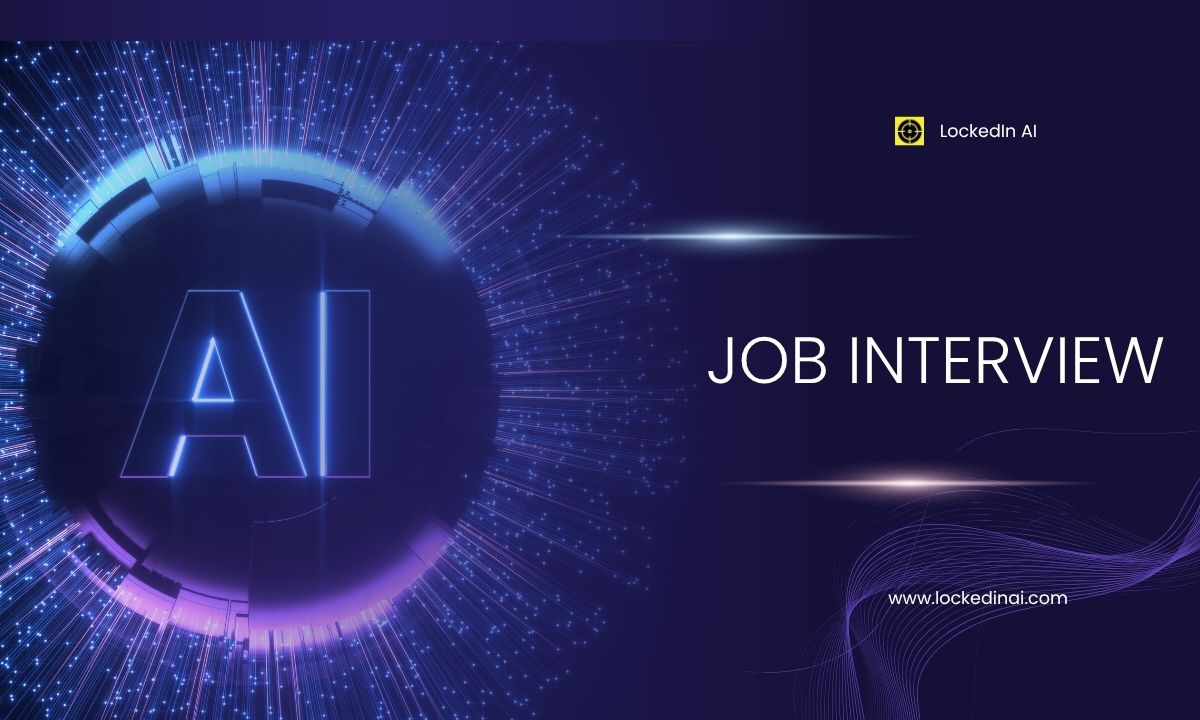
Introduction
In today’s fast-changing job market, AI Job Interview is emerging as a game-changer for job seekers. Whether you’re preparing for a technical role, behavioural round, or remote video interview, these tools offer real-time insights and structured practice. With platforms like LockedIn AI leading the way, candidates can now sharpen their skills, improve communication, and confidently face even the toughest interview panels. Let’s dive into how Job Interview AI can help you prepare smarter and boost your chances of landing that dream job.
Job Interview AI: What It Means
AI Job Interview refers to intelligent systems that support you during preparation, mock interviews or even live interview scenarios. Rather than practising alone with generic questions, you get tailored feedback, real‑time suggestions, and simulated responses that mimic real‑life interviews. With LockedIn AI, for example, the platform offers features like real‑time answer generation, live feedback and role‑based coaching. lockedin-ai +1 The benefit is clear: you go in prepared for more than just what you expect.
Why Candidates Need Job Interview AI
Let’s look at the reasons you might want to use AI Job Interview:
- Interview questions now span behavioural, technical, case‑study and sometimes cross‑domain challenges. Having one tool that addresses all is a big plus.
- Video or remote interviews add new layers of complexity: eye contact, audio clarity, non‑verbal cues. AI Job Interview helps you refine those too.
- Time is limited; you can’t prepare for everything manually. A smart system accelerates learning and helps you focus on what matters.
- With the right platform, you get insights into what you said, how you said it, and what you can improve—making you stronger for the next round.
How LockedIn AI Leverages Job Interview AI
Still wondering how exactly a platform uses AI Job Interview? Here’s a breakdown via the example of LockedIn AI:
- Real‑time responses: The system listens to your interview questions or scenario and gives suggestions on the fly.
- Multilingual & global support: It supports 42 languages and regional accents.
- Feedback on communication style: Not just what you say, but how you say it—tone, pace, filler words.
- Mock interview simulations: You can practice various interview types—behavioral, tech, case study, etc.
- Desktop app with privacy‑focus: For live interviews and screen sharing, it offers features like stealth mode, system audio capture.
These features make the platform a robust AI Job Interview solution.

Conclusion
To sum up, Job Interview AI is a powerful ally in today’s challenging job market. Whether you’re gearing up for a first job, aiming for senior leadership, or switching careers, tools like LockedIn AI make preparation smarter, faster and more effective. But remember: the tool doesn’t replace your personal effort, mindset and authenticity. Use AI Job Interview wisely, practise consistently, and go into your next interview with confidence. With the right approach, you’ll increase your chances of success significantly. Best of luck — you’ve got this!
FAQs
How much does a AI Job Interview tool like LockedIn AI cost?
Pricing varies by plan—some offer free trials or basic versions; premium, unlimited versions cost more. Always check the latest pricing on the vendor’s site.
Can AI Job Interview replace traditional interview preparation?
Not completely. It’s a strong supplement that accelerates and focuses your preparation, but you still need to practise thinking on your feet, research the company, and rehearse manually.
Is AI Job Interview safe to use in live interviews?
Depends on context. For live interviews, check the company’s policy. Use discretion and focus on practising beforehand rather than relying fully during the session.
Will AI Job Interview help in non‑tech roles?
Yes. Many tools support behavioural, case study, sales, marketing, and consulting roles. With LockedIn AI, multi‑industry support is listed.
How should I practise with AI Job Interview to get the most out of it?
Set clear goals, pick relevant scenarios, use the feedback loop thoroughly, review your performance and iterate. The key is consistent use, not just one session.